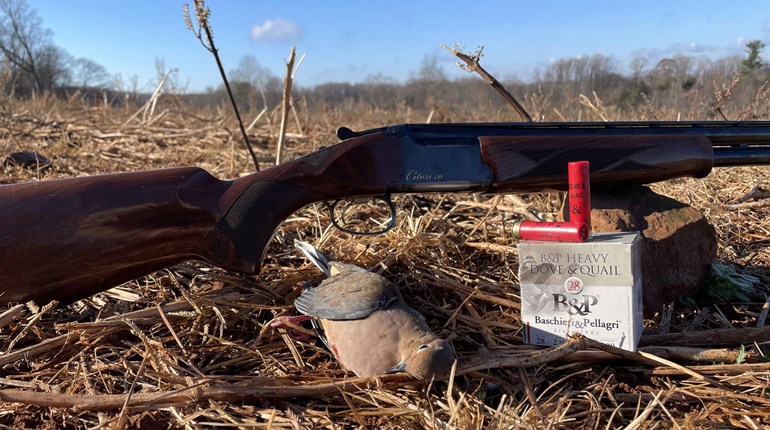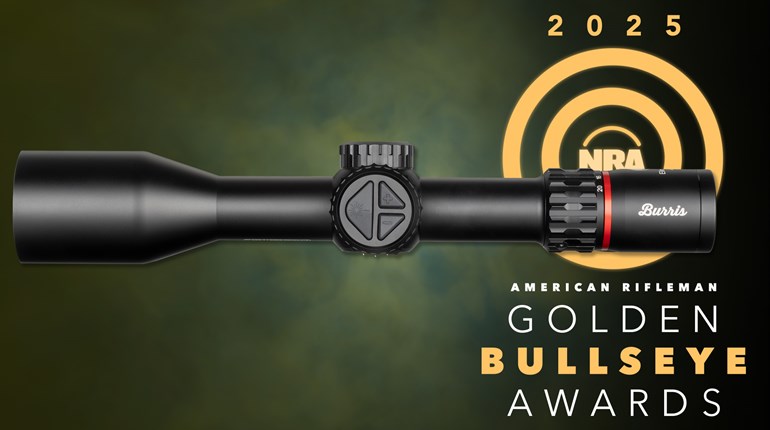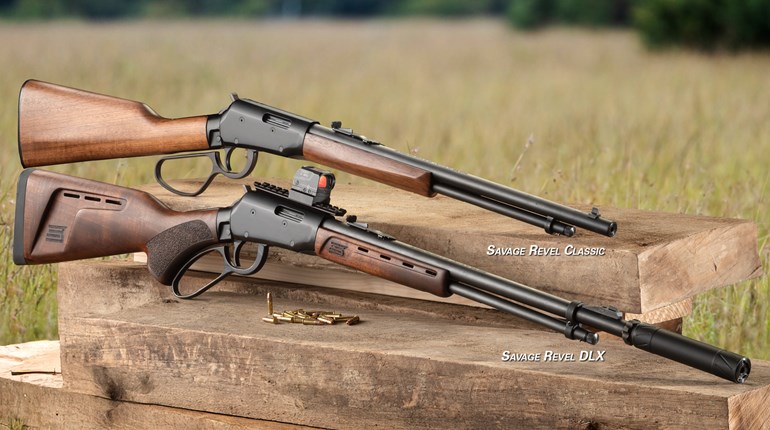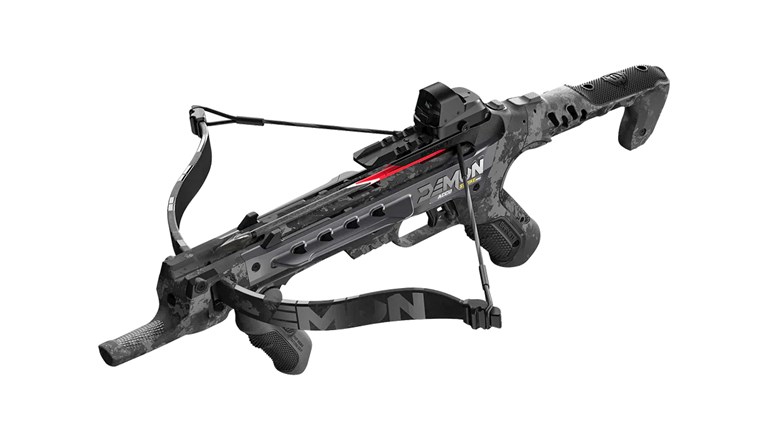
Crossbows are the ultimate hunting tool. Not only can they be employed where firearms and muzzleloaders cannot—such as certain urban and suburban areas with scads of deer, and naturally in archery-specific seasons—they can also pull double-duty during other seasons, provided that it’s legal. What’s more, crossbows are perfect for introducing youth—and adults—to big-game hunting. They’re also more novice-friendly in the field, as less movement is needed to take a shot. The latter is the reason I ditched my compound bow and mostly ground hunt. Lastly, the changing of archaic laws and uninformed, unidirectional attitudes—even among hunters—as well as the previously mentioned advantages, have led to tremendous growth in crossbow users and manufacturers over the past two decades.

Today’s crossbows are vastly superior in all respects to those offered even a decade and a half ago, or less. Who’d thought we’d ever reach, let alone break, the 500-f.p.s. threshold, as well as have the ability to cluster bolts at 100 yards as tightly as your “trusty deer rifle.” We have both. But, such abilities come at a cost. Whereas $1,000 once seemed obnoxiously high for a top-tier, feature-filled model, nowadays some packages exceed five times that price. Or, how I prefer to see it, as much as I spent on a mint 2008 Honda Pilot a few years ago. That’s how I judge value and price. But, we all perceive value distinctly, as do we have differing discretionary spending.

The benefit of companies reinventing—or “improving”—the wheel annually is that, as new technologies and models oust previous ones, features that once represented the pinnacle trickle down to lower costing units. Sometimes models are simply renamed/re-branded and sold at discount. Therefore, depleting one’s savings is unnecessary to head afield with a crossbow that’s not only fully capable of fulfilling myriad hunting tasks, but also that you’re proud to own and feel represents a solid value for your hard-earned dollars.

In the subsequent sections, I detailed four exceptional crossbow packages that can be purchased for less than $600—sometimes half that cost. Sure, limiting the list to four omits many options, but this quartet represent solid value and, only a few years ago, would have cost much, much more. Here’s to enjoying the high life on a budget.

Excalibur Mag Air Package
Canadian-made Excalibur crossbows are renowned for their simplicity, durability, reliability, ease of maintenance, and accuracy. I can testify to this, as I’ve utilized them annually for nearly two decades. Not once have I been left wanting, and I have absolute confidence with each trigger pull.

The Mag Air is the most economical Excalibur model currently available; however, don’t consider it to be “cheap” or sacrificing anything. Weighing 4.9 pounds (sans accessories) or 6.7 pounds (fully equipped)—thanks to its skeletonized G2 Synthetic mainframe—the 31-inch bow is perfect for long treks. An integral, bilateral lip on the fore-end prevents wandering fingers from protruding into the string’s path. Since the solid limbs are of the recurve design, the draw weight and tip-to-tip width can be expected to heavier and lengthier, respectively. The Mag Air has a 136-pound draw weight, but the included rope cocker reduces that number to 12 pounds. As for recurve-style limbs, their simplicity means that there is little to go wrong, and maintenance is simple; in fact, you can replace a worn or sliced string yourself in minutes without a press. What’s more, said limbs are conducive to top-notch accuracy. While 305 fps seems as slow as a slug currently, I can assure it that it’s amply fast. My go-to Excalibur Micro Axe 340 from 2019 isn’t much quicker, and I have yet to have a game animal avoid the inbound bolt.

The Mag Air has a two-position safety, albeit not automatics (just like your firearm), and an anti-dryfire system. Included with the crossbow are: a fixed-power scope with rings; three, 16.5-inch Quill bolts; three 100-grain field points; a four arrow quiver; and a rope-cocking aid. MSRP: $579.99

Wicked Ridge Commander M1 Package
Demand “deluxe”? Then opt for TenPoint Crossbows’ products. Want quality, excellent performance, and value? Then Wicked Ridge is your crossbow company. Like the rest of the Wicked Ridge line, which is owned by TenPoint Crossbows, the Commander M1 is American-made, being built in Mogadore, Ohio. Extensive testing and field use for more than a decade has proven to me the ruggedness, reliability, and accuracy of products from both lines.

Individuals who prefer a lightweight and narrow crossbow will find it in the Commander M1. Weighing 5.8 pounds and measuring 34.5 inches (omitting foot stirrup) in length, the M1’s axle-to-axle (ATA) width is a scant 9.5 inches when cocked. That number increases to 14 inches at rest. Therefore, the M1 will excel for distant jaunts and in the confines of a ground blind or treestand. And yet, the bow’s 13.8-inch power stroke propels 20-inch, 370-grain arrows to 380 fps. It’s only 10-fps slower when the provided 410-grain. Wicked Ridge Match 400 arrows are used. The Commander M1 is available with the rope sled or, for $100 upgrade, the ACUdraw preinstalled. The latter reduces the 180-pound pull weight to five pounds. The M1 has an automatic safety, anti-dryfire system, and shields to protect the user’s fingers from the string. Included in the package are: a pre-sighted, 4X multi-line scope; three Match 400 carbon arrows; and a quiver. MSRP: $499.99 (rope sled) to $599.99 (ACUdraw)

CenterPoint Archery AT400 Package
While many crossbow enthusiasts salivate at Ravin Crossbows’ extensive lineup—me included—the cost of even bottom-tier models is hard to stomach. Fortunately, Ravin, which also owns CenterPoint Archery, also offers economical, feature-filled options through the latter. Of its numerous crossbows, I selected the AT400—but not by choice. In fact, I had selected a different model for this list until I heard that many of Ravin’s workers, who have access to anything in that company’s line, acquired AT400s at their arrival. This wasn’t hearsay; it was direct from the source. That speaks volumes. Numerous positive reviews sealed the deal.

The CenterPoint AT400 has much going for it, particularly considering its low cost. The 33-inch-long, 7.5-pound unit has a 14.5-inch ATA cocked width, and it’s only 3¼ inches wider when un-cocked. Yet, thanks to its 200-pound draw, attains upward of 400 fps. Other features include: a full composite rail—the first of its type within the company—and stock system; ambidextrous safety with an anti-dryfire system; oversized foot stirrup; adjustable ergonomic foregrip; and roller arrow retention spring. It also comes with a 4X scope, detachable quiver, three, 400-grain arrows, and a detachable silent crank system. That’s a lot for the money. MSRP: $349.99

Killer Instinct Fiery 400 Package
Narrowing down the field to the one with Killer Instinct Crossbows is challenging, as nigh all of the company’s products meet the price criteria I set. I ultimately chose the low cost (yet highly rated) Fiery 400. The 7.2-pound, 43.5-inch-long, split-limb crossbow has 14.75-inch and 18.75-inch cocked and un-cocked widths, respectively. Boasting a 200-pound draw and 14.5-inch power stroke, it launches bolts up to 400 fps. The Fiery 400 has a composite stock with finger protection, and thanks to a full-length Picatinny rail, the foregrip is adjustable. Custom shock absorbers are provided to reduce vibration and noise. Unfortunately, the Compact DSC Wide Sled Crank isn’t included; however, it can be purchased separately. The trigger is set at 3.5 pounds, and there is a two-position safety. Accompanying the bow are: a 4X scope; rope cocker; three-arrow quiver; two HYPR Lite 20-inch, 370-grain arrows with field points; and a stick of rail lube. MSRP: $299.99
The crossbows detailed above are just a few of the many economical models that are currently available. However, each offers incredible value and will serve you faithfully. While it might be nice to own a multi-thousand-dollar crossbow, it’s unnecessity to be successful in the field. I promise you that.




































